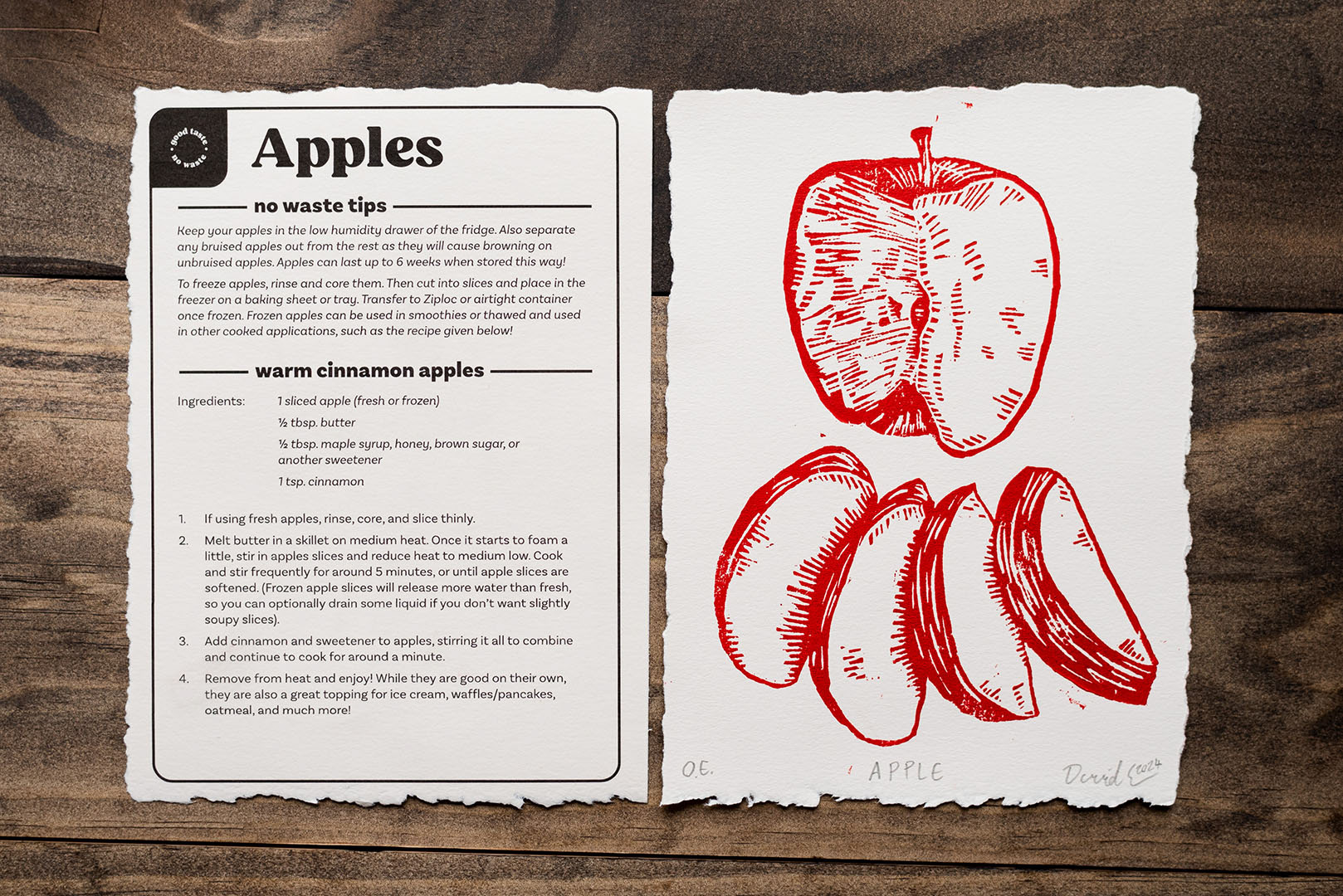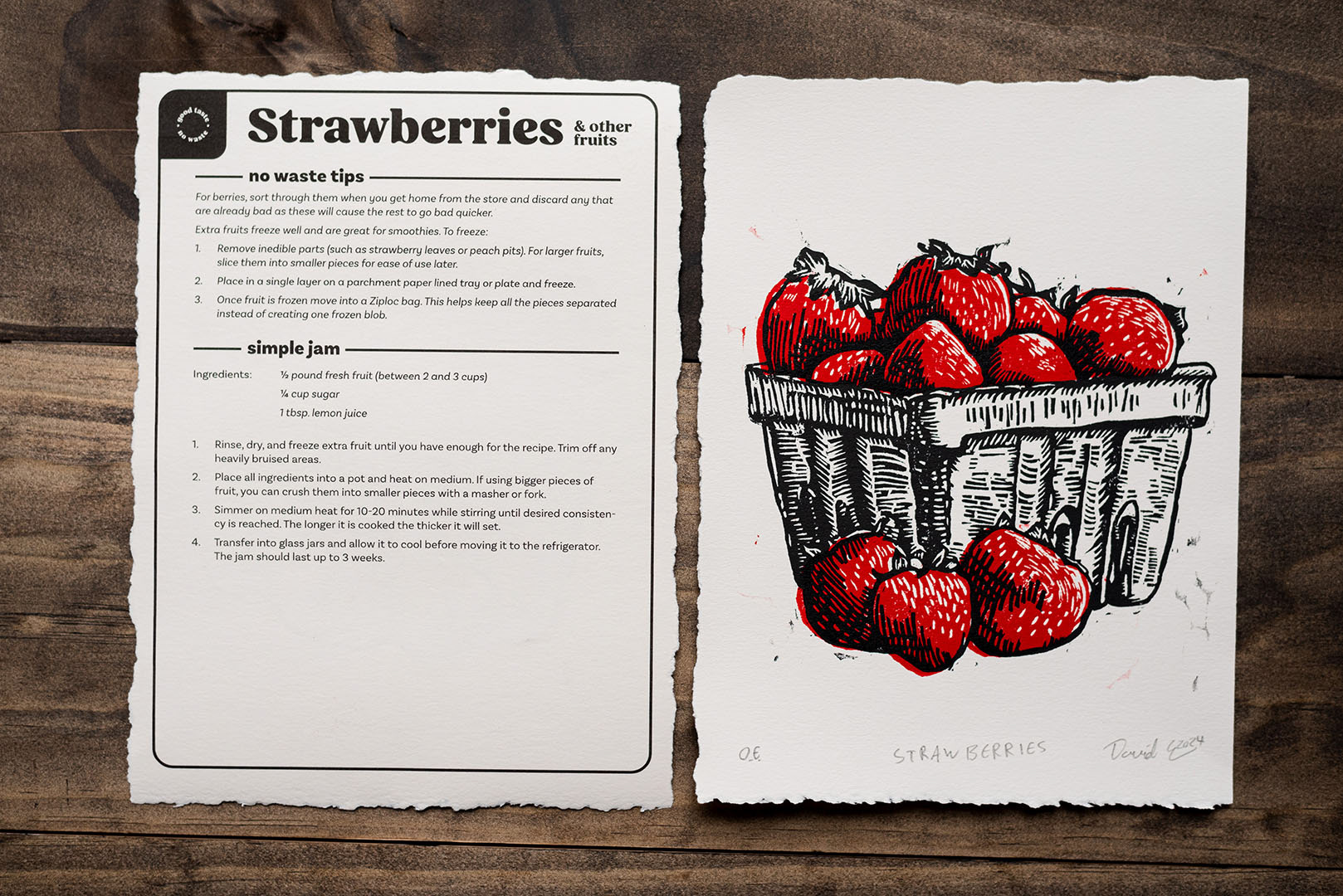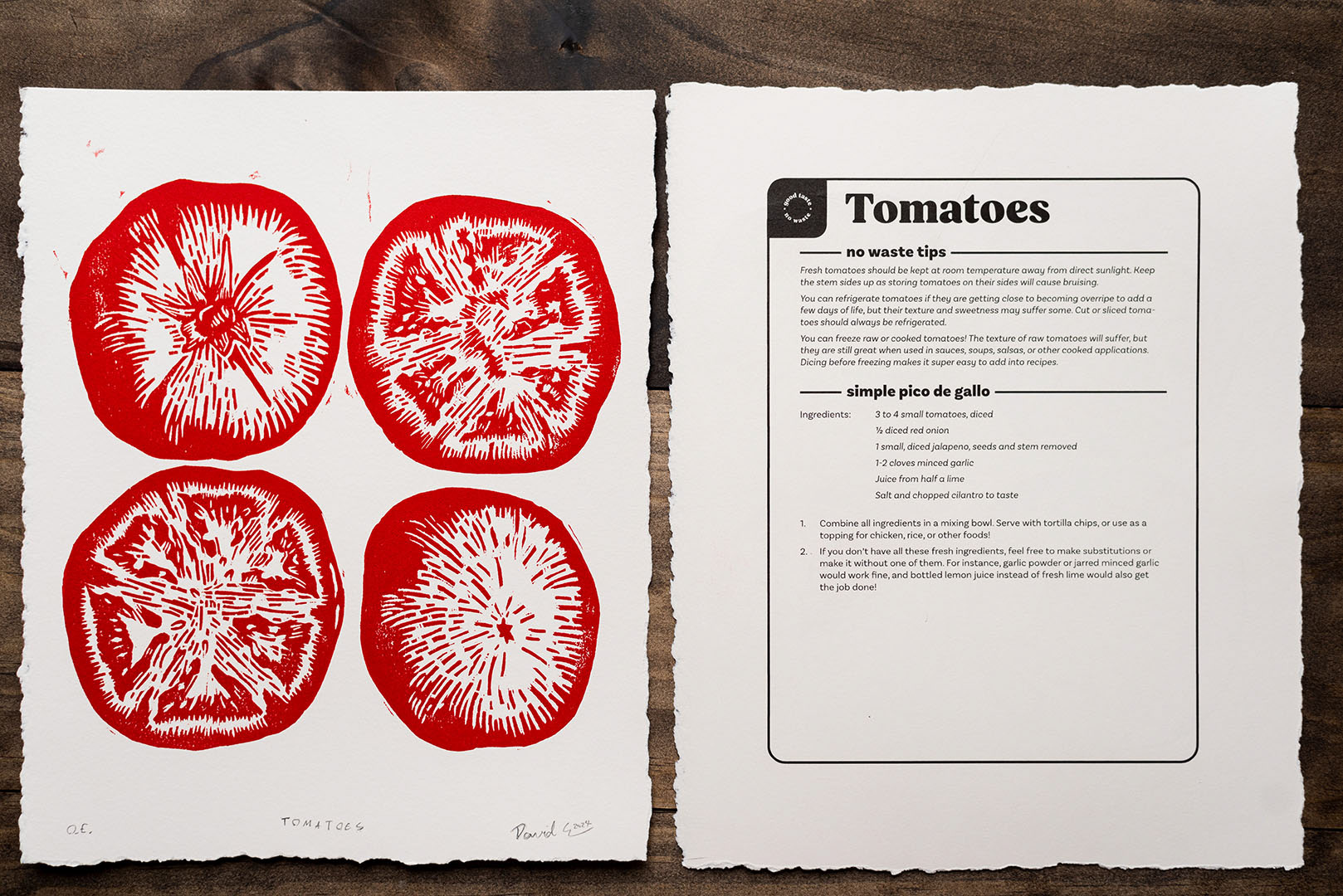Thesis Abstract
Consumers are the biggest contributors to food waste in the United States and in other developed countries, though most of them don’t realize it. American young adults living independently for the first time lack education on responsible food management in the areas of planning, preparation, and preservation. This lack of skills results in excessive waste of food, money, and energy, and leads to significant damage to the economy and the environment. Ample research exists identifying this issue and the changes that need to be made, yet effective visual solutions have not yet followed.
Through a comprehensive topical survey, along with case studies and visual analyses, this thesis will synthesize the existing research and knowledge into effective visual solutions. These solutions focus on improving skills in the identified areas of food management as well as combatting apathy amongst the target audience. Simplicity, accessibility, and efficiency are primary objectives of these solutions, which span both print and digital mediums.
The Problem
Food waste facts
40 percent of the food supply in America is wasted every year (Berkencamp et al., 1)
43 percent of American food waste occurs in households (Gunders et al.)
80 percent of avoidable food waste occurs because of poor food management (Quested et al., 11)
Methane gas produced by food in American landfills accounts for 34 percent of global methane gas emissions from human-related sources (Hickey and Ozbay)
Over one quarter of the United States’ annual freshwater usage is wasted in the farming of crops that are never eaten (Hickey and Ozbay).
Older generations produce less food waste than younger generations, with Gen Z being the biggest culprit (Karunasena et al.)
What does this mean?
These facts, along with the rest of the research I did, reveal the exorbitance and the severity of food waste in America. It wastes our money and resources and causes significant harm to the global economy and environment. Consumers contribute more to food waste than industrial and commercial organizations, and the cost of consumer level waste is greater due to the resources and time spent producing the food and getting it to households.
The vast majority of food waste in households is avoidable as well, and largely comes down to a lack of skills in food management, meaning planning, preservation, and preparation. On the bright side, this also means that food waste among consumers is highly fixable.
This is a very brief summary of the food waste problem and the research I did into it. My full thesis document is attached at the bottom of this page if you feel inclined to learn more.
The Solution
Primary focuses established by the research:
• A focus on young adults living independently for the first time.
• Raising awareness towards personal food waste and its impact.
• Educating on food management in the areas of planning, preservation, and preparation.
• Simplicity and accessibility of the food-waste reduction methods shared.
Good taste no waste: a brand
I wanted to create a solution that could be expanded on and was not necessarily confined to the time limitations of my thesis. Therefore I did not want to design a one-time campaign, but rather a starting point for a brand that educates and fights against food waste. I then chose individual deliverables that would further establish the brand style, both in aesthetics and voice, and would also model how the brand achieves the objectives found in the research.
In creating the brand of Good Taste No Waste, I wanted the visual style to fit somewhere between the trendy organic food brand aesthetic, such as Recess and the work of Young Jerks Studio, and the outdoorsy aesthetic of REI, Patagonia, and the National Park Service. These two aesthetics combined would be familiar and intriguing enough to reach the target audience of my visual solution and also convey the sustainable and earth-conscious values of the brand.
Visual brand guide for Good Taste No Waste
Recipe Prints
The first deliverable I focused on creating was a series of relief prints. The prints all feature food, most of them display imperfect or partially used foods, such as half an onion, or a partly eaten banana. These serve as visual reminders of food waste, and in that way also boost awareness. As fine art prints they are meant to be displayed. Whether that is in a living room, on a refrigerator, or somewhere else they can serve as a visual reminder for people to be aware of their food waste each time they see it.
The backs of the prints also feature easy recipes and simple tips for preserving and using up the foods featured on the prints. This helps to educate people on food management. While there are lots of unique and creative ways to use up foods, the recipes and tips featured focus on simplicity and accessibility as that was a primary focus identified in the research.
The prints also contribute to the visual aesthetics of the brand. I scanned each print and image-traced them to create vectors of each piece of food. I could then use these as visual elements across the other deliverables as seen in the brand guide above and in the posters.









The Posters
I created a 3-poster series (sized 18x24 inches each) that build off each other but also work independently. Each would have one primary message. The messages were “It’s our problem (that includes you),” “It’s a global problem,” and “It’s a fixable problem.” One poster describes the personal and cultural reality of food waste, the second describes the global impact, and the third goes into how food waste is very fixable and an easy way to better the world. I wanted the messaging to be encouraging and hopeful, but at the same time raise awareness of the severity of the food waste issue.
In addition to raising awareness, I wanted to dispel the belief of many young adults that it would be a difficult endeavor to reduce their personal food waste (Nguyen). That is why the posters in several places state that reducing waste only takes a little effort, and that people only need to be better, not perfect. The main message of the third poster is also all about how food waste is easily fixable.



Short-Form Videos (Reels/TikToks)
The growth and popularity of social media, particularly short-form videos on platforms like Instagram and TikTok, offers a promising platform for addressing food waste. Among the target audience, social media is the second most common source for cooking recipes after family (Sloan). 44 percent of individuals aged 13-39 have cooked a viral recipe they saw on social media (Sloan). Based on the research, it’s clear that social media, especially short videos, had to be part of a solution to food waste.
With the short videos for this thesis, I wanted to continue to place emphasis on simplicity and accessibility like I did with the recipe prints. They also help to achieve the objective of educating on food management skills. Learning cooking skills in general will help people to use up more of the food they buy and reduce their food waste. Teaching people to use foods and ingredients in different applications, and to be creative with their cooking, is a strong method for reducing food waste, and it is best done through video.
Stills from the jam short video
Stills from the banana pancakes short video
Stills from the omelet short video
Stills from the pickled onion short video
Gallery Exhibit
As part of the MFA thesis requirements, my work was displayed in the University's art gallery, below are pictures from the gallery showcasing how the work was displayed.






Full Thesis document
Below is a link to my full thesis document. The research into the issue is much more detailed than was described above and a fuller description of my design process is also included.